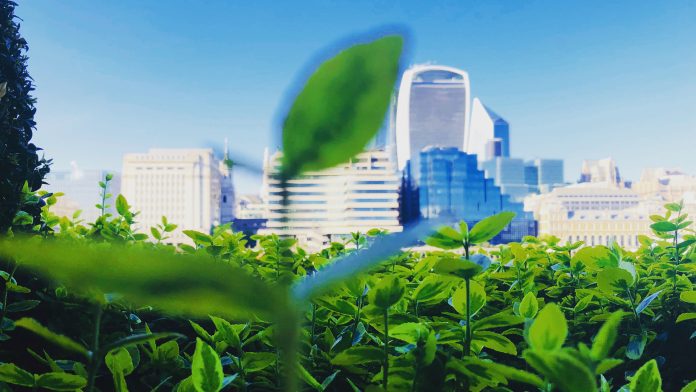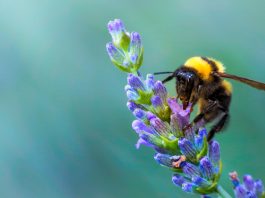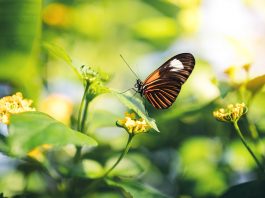Research conducted as part of the URBAN GreenUP project indicates that pollinators play a significant part in enhancing city sustainability and mitigating the impacts of climate change.
Many food plants such as cucumber, almonds avocados all need pollinators to reproduce: animals like bees, bats or lizards that transfer pollen from the ‘male’ part of the flower to the ‘female’ part.
Pollinators are a vital part of the food system, and are required by 75% of cultivated and 90% of flowering plants. As well as this, they defend animal biodiversity by acting as food for other species and enticing predators to aid the control of unsought pests.
On top of this, they are good indicators of water and air quality; in a polluted environment, plants and flowers are the first to be impacted, which results in a decrease in pollinators, signalling negative quality.
The FAO have estimated that their extinction rates are between 100 and 1,000 times higher than normal as a result of human impacts such as chemical use, intensive farming, and increasing urbanisation. Higher temperatures, extreme climate events and changes in flowering time similarly impede pollination. The insects do attempt to adjust to a new habitat, but they are being forced to adapt at an extraordinary rate.
One of the central focuses of the European project URBAN GreenUP is tackling the challenge of helping pollinators to survive. The project is evaluating over 40 solutions inspired by nature to alleviate the impacts of climate change, enhance air quality and water management, and improve the sustainability of cities. They are currently being executed in Liverpool in the UK, in Valladolid in Spain, and Izmir in Turkey, and will be duplicated in other cities around the world.
“We are testing both more traditional types of solutions, like tree planting or pollinator gardens, which people may be more familiar with,” said Juliet Staples, senior project manager of URBAN GreenUP in Liverpool. “And we are also testing some more unusual types of nature-based solutions, like floating ecosystems or tree sustainable urban drainage systems, for example.”
The researchers are assessing various land types for pollinators. “We have got six quite distinct sites; some are very shady, some are hard-surfaced. For example, we have got a site that is very coastal and exposed. In contrast, another one is very urban, in the middle of a housing area. So, each of them will have different pollinator preferences,” commented the appointed contractor, Elaine Cresswell, landscape architect and director of the consulting company reShaped.
Pollinators require am environment devoid of chemicals and toxic materials, with an assortment of flowers that bloom in different seasons, to ensure they can access safe nesting habitats, food, and water all year.
It is also imperative to guarantee that their habitats are connected, to alleviate difficulties with the insects’ dislocation and activity. In this vein, green road verges are a significant nature-based solution being contemplated by the project, as they offer hotspots for pollinators and corridors to connect the ecosystems within the urban and peri-urban areas.
Currently, the project’s findings are preliminary. “The interventions are increasing the number of flowers and we’re trying to find out if they are also affecting the number and diversity of pollinators,” explained Stella Shackel, data officer of the project in Liverpool.
While the researchers are still in the early stages of data collection, they have already attained some important insights. One of these is how necessary it is to leave areas unweeded with flowering plants.
“When an area is cleared, only ants appear. However, when an area is not weeded, even if there is traffic and many people, a constant population of pollinators is maintained,” said María González, agronomist working on the URBAN GreenUP project in Valladolid.
Project researchers in Spain are utilising pollinator modules, as explained by Raquel Marijuan, an architect working for the project: “For urban areas such as streets and squares we’re testing compacted pollinator modules, which are composed of different shaped pots that can be grouped together. In parks and gardens, we are planting flowers and trees directly in the ground, which can make the pollinator space bigger and have a more organic shape.”
The Valladolid group also discovered that the location of the modules impacts the pollinator biodiversity. “If there is a large wild area nearby, pollinators will always prefer to go there and visit the nature-based solutions less. We have also observed that large pollinators are not usually found in very urban areas, perhaps because of the lack of connectivity between green areas or because there are not enough nutritious plants for them,” González commented.
Another finding by the researchers is that the type of vegetation in modules is very significant: Kenilworth Ivy and marguerite offer the best results for attracting common pollinators like bees and butterflies.









